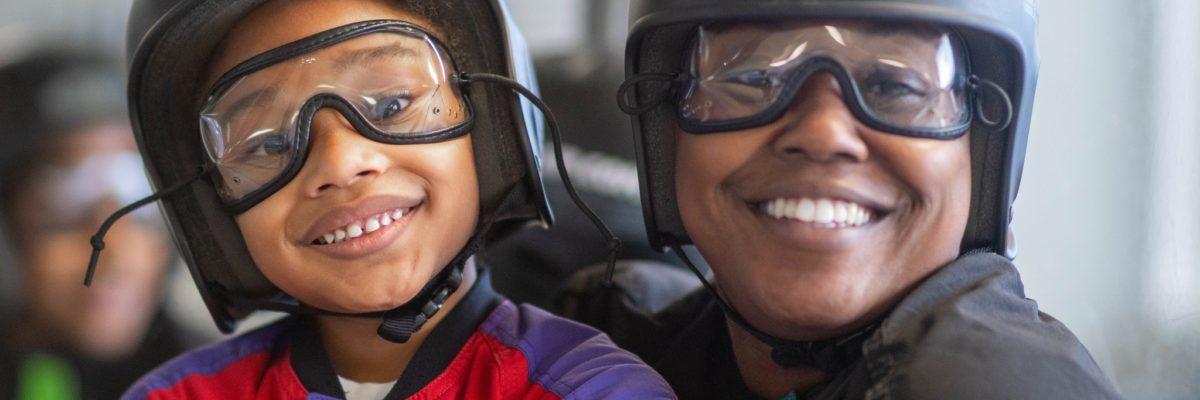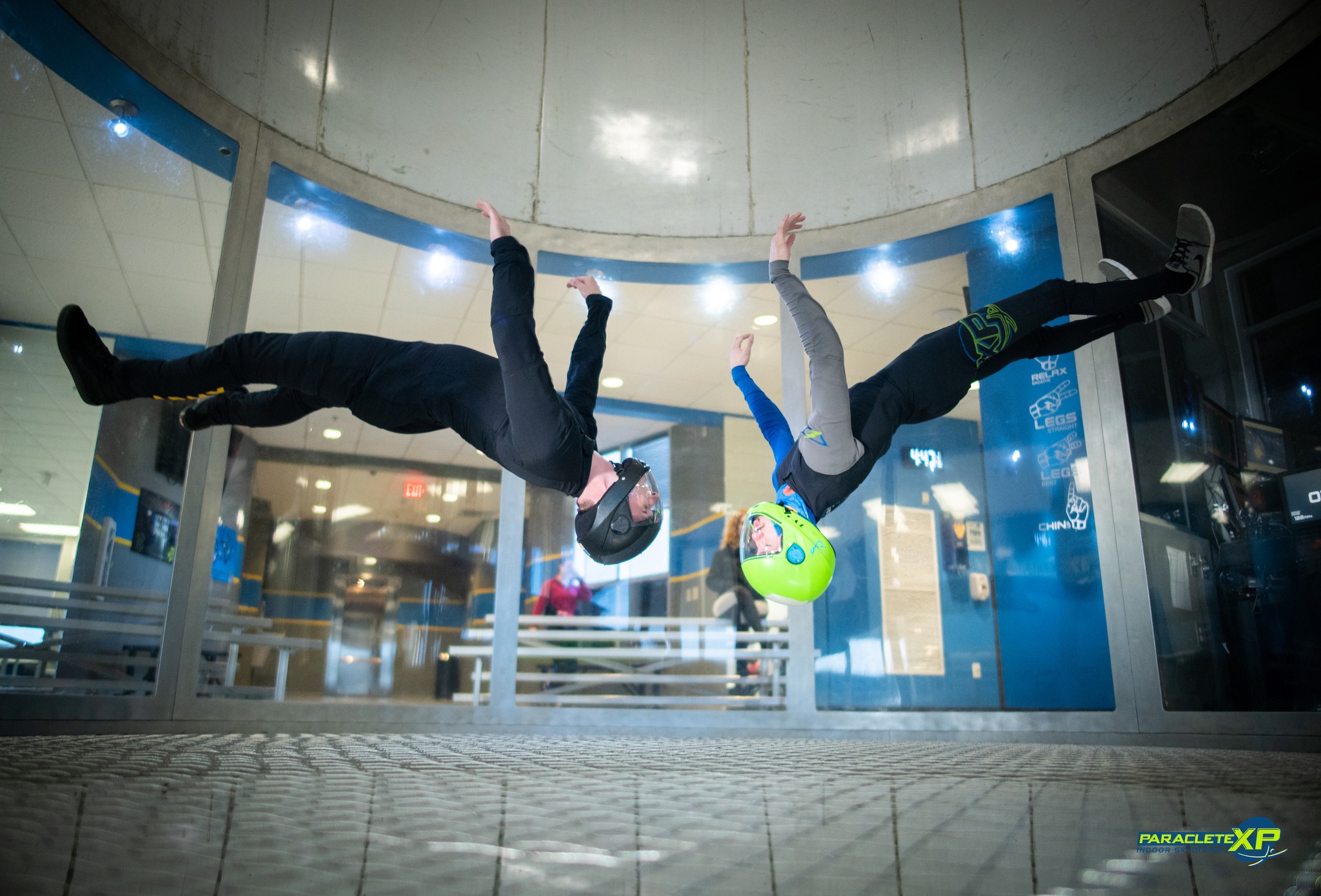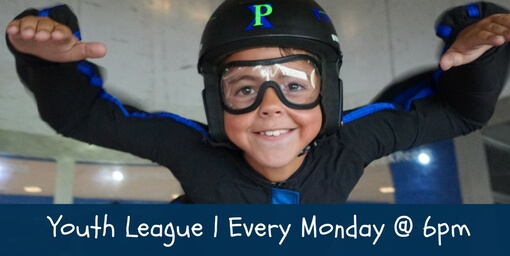
Your Top 5 Indoor Skydiving Questions Answered!
Thursday, December 2, 2021
Your Top 5 Indoor Skydiving Questions Answered!
It used to be that if you wanted to experience freefall, you’d have to strap yourself to a happy-go-lucky stranger or endure a thorough full-day briefing before exiting solo. While both of these are solid options, and plenty of people still use tandem skydiving and the accelerated freefall course to experience skydiving, it doesn’t have to be your first introduction.
Over the last decade and a half, indoor skydiving has become a popular way to test out the freefall portion of skydiving without committing to the whole “jumping from a perfectly good airplane” thing.
Interested?
You’ve probably got a few questions, and guess what? We’ve got the answers!
Question One: Who can indoor skydive?
Answer: Indoor skydiving is accessible to just about anyone in moderate to good health from ages ranging from 3 to 93 (and beyond)! However, there are a few basic requirements that need to be met.
For indoor skydiving at Paraclete XP, we have a maximum weight limit of 250 lbs. On occasion, this restriction can be waived, so please give us a call if you are interested in indoor skydiving but exceed this weight limit. We also suggest that pregnant individuals or individuals with prior shoulder dislocation issues not participate in indoor skydiving. Additionally, if you have had a history of neck, back, or heart issues, we recommend checking with your doctor before participating in indoor skydiving.
Question Two: What does indoor skydiving feel like?
Answer: Well, in a word, incredible! But, specifically, the feeling of indoor skydiving is somewhere between flying and floating. The indoor skydiving wind tunnel produces a column of air upon which the participant flies. This column of air replicates the relative wind that one would experience during the freefall portion of a skydive.
By manipulating your body, the airflow is disrupted and redirected across the surfaces in contact with the relative wind. These movements and the pitched surfaces you create with your body are what allow you to maneuver around within the wind tunnel.

Question Three: How long does an indoor skydive last?
Answer: Typically, first-timers will select an indoor skydiving package that provides 2 to 3 minutes of flight time. Although, additional flight time can certainly be added if so desired. For the entire indoor skydiving experience (including check-in, training, gearing up, and flight time), you should plan on allocating about an hour of your day to the tunnel.
Question Four: Is indoor skydiving like the real thing?
Answer: Indoor skydiving focuses on a single portion of the skydiving experience: the freefall. And truth be told, it’s as close as you can come without jumping from a plane! Indoor skydiving allows you to fly your body and experience skydiving without having to deploy a parachute or, for that matter, land one!
Question Five: What else can I do after my initial skydive?
Answer: Lots! The fun doesn’t need to end after your first indoor skydive. In fact, it is just the first step of a wonderful journey. Indoor skydiving is a sport complete with events, workshops, leagues, and competitions. As in skydiving, there are multiple disciplines or different types of flying, so there’s tons more to explore and a wealth of skills to build!
Spread your wings ’cause it’s time to fly indoor skydive style! Schedule your first flight with Paraclete XP today.

Thanks so much for a wonderful first time adventure for me and my 5 year old great-niece; and also my 2nd timer niece. I felt very safe and informed through the whole process. My only wish is that we had ParacleteXP in Minnesota-with you to guide us! Thanks again for a wonderful time. We will DEFINITELY be back next time when in NC.
Ellen Adams
Copyright © 2025, Paraclete XP Indoor Skydiving, All Rights Reserved.
DropZone Web Design & Marketing by Beyond Marketing, LLC